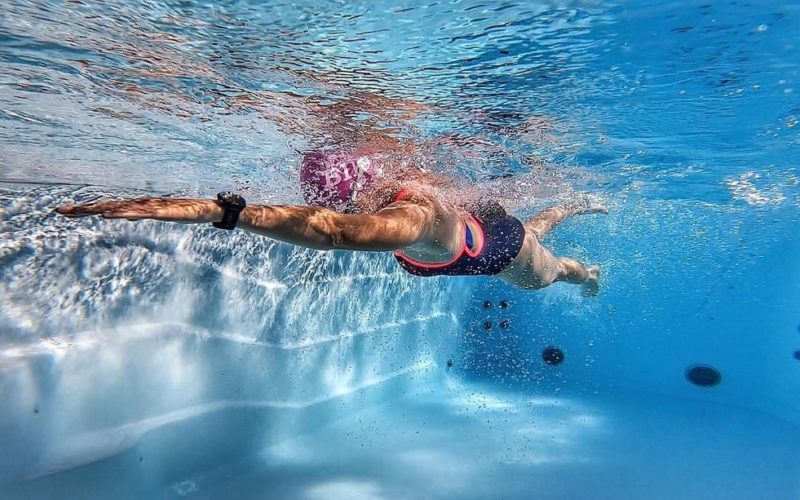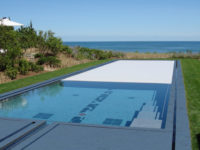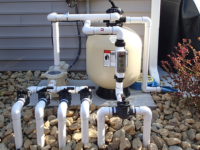Being able to do a swim workout at home, even if you don’t have enough space for a pool, or getting a good massage and relaxing in the warm water after your workout sounds like a dream come true. You may have heard of a swim spa, which combines the functions of a pool and a hot tub. To find out what a swim spa is and what the advantages and disadvantages are, read our article. We have collected everything from the types of design and placement to the maintenance rules. Let’s find out together if they are as good as they are said to be.
What Is a Swim Spa?
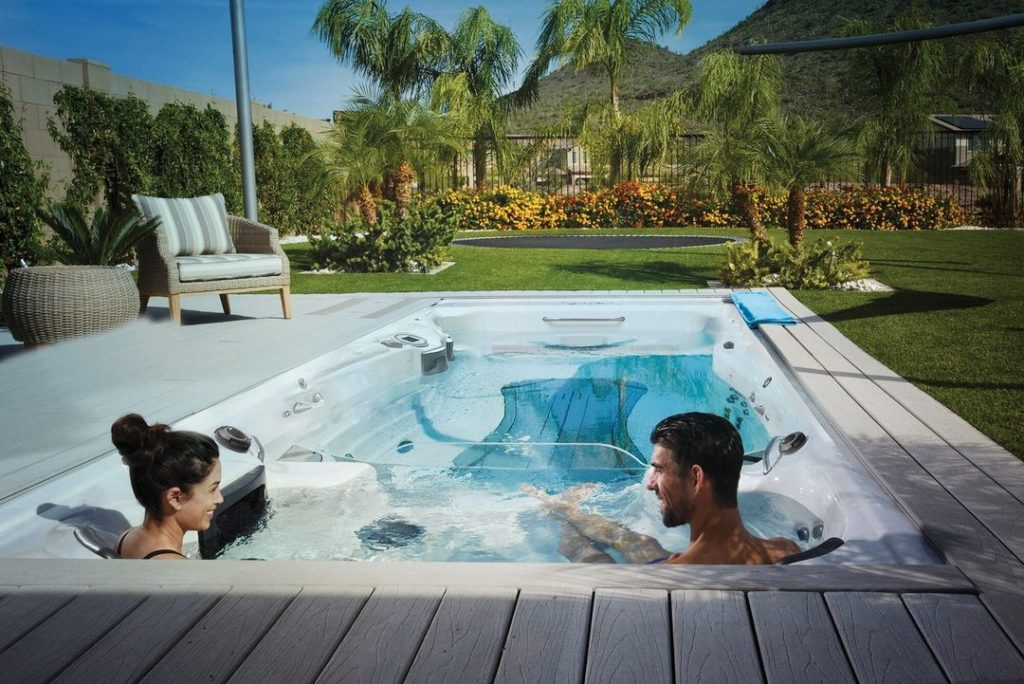
Swim spas, as the name suggests, are a combination of a spa (or hot tub) and an exercise pool. Single-zone models, as well as two-zone models, are typically a fiberglass pressure-driven exercise pool which has swim jets at one end, and one or more spa seats fitted with massage jets at the other. However, modeled acrylic shells are also common. All the important elements such as filters and heaters can be built inside the swim spa. Such models are visually very similar to a hot tub and are called self-contained. Some have these elements installed separately, for example, under the deck.
Unlike traditional hot tubs, swim spas have been designed for sports activities and relaxation after exercise. They are perfect for installing in backyards with limited space and are popular among swimmers and sports enthusiasts. In addition, like hot tubs, swim spas have a heating system that allows you to use them all year round. This is a great advantage over traditional pools.
All swim spas, except endless pools, are divided into two areas. One end has a constant current system and the other has seats with massage jets. The current for swimming in place can be created by powerful water jets, a propeller, or a paddle wheel system, but the first option is more common in modern models. People of different fitness levels can train in the infinity pool of a swim spa because you can adjust the strength of the flow with a control panel.
Difference Between a Swim Spa, Hot Tub and Pool
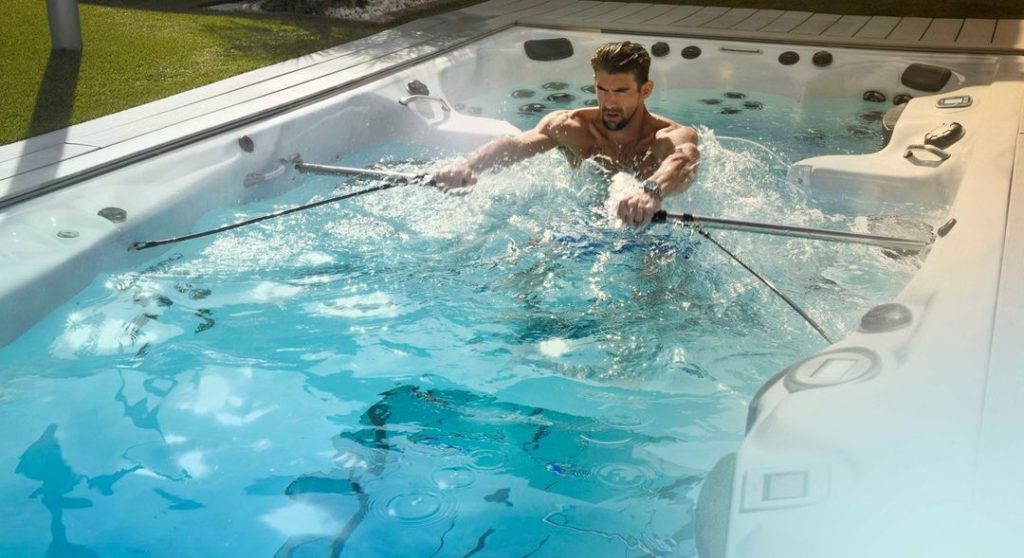
The swim spa has unique functionality and features. But as it combines elements of a hot tub and a pool, this can lead to confusion between them. To help you understand the difference, we have prepared a table with the most important characteristics.
| Swim spa | Hot tub | Swimming pool | |
| Standard sizes are 11-20 feet by 6-8 feet. It has a rectangular shape | Standard sizes are 5-9 feet by 5-9 feet. Can have a circular, square, rectangular, triangular, or custom shape | Standard sizes are 10-20 feet by 20-40 feet, but there are many optional sizes. Can have a rectangular, oval, or free-form shape | |
| Designed for water sports and post-exercise relaxation. Combines swimming against the current and hydrotherapy in warm water with massage jets | Designed for relaxation and hydrotherapy, which includes warm water and massage jets | Designed primarily for swimming, water sports, and recreation. It may also include diving boards, slides, and other specific pool elements | |
| Suitable for year-round use due to temperature control | Suitable for year-round use due to temperature control | Seasonal use, limited to warm seasons | |
| Requires more maintenance than a hot tub, but less than a pool. You need to use chemicals to keep the water clean | Easier to maintain than swim spas and pools. Requires the use of chemicals to keep the water clean | Requires the use of chemicals to keep the water clean. Hardest to maintain due to the large volume of water | |
| Generally, the price is higher than hot tubs but lower than pools. On average from $20,000 to $30,000 | The price is usually lower than swim spas and pools. On average from $1,000 to $20,000 | Often the most expensive option due to construction. On average from $40,000 to $50,000 |
What Are the Types of Swim Spas?
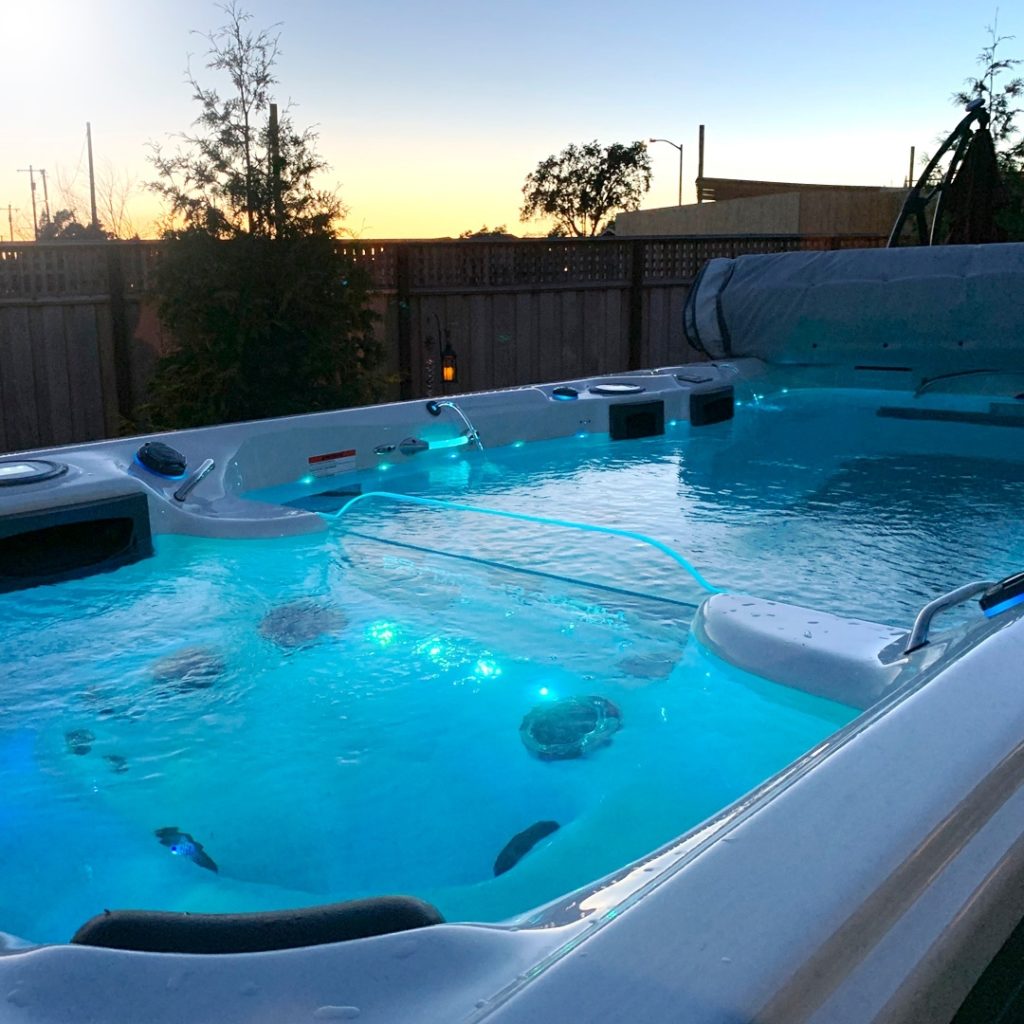
Swim spas are divided into three main types: single-zone, two-zone, and infinity pools. They differ in size, function, and number of water bodies. Such variability in swim spas allows you to find a model for different purposes and placement options. Let’s look at them in detail.
- Single-zone swim spas
As the name implies, these models have a single water body that includes a swimming area with a constant current and a hydrotherapy area with massage jets. In these models, the heaters are located in the hot tub part. This design helps keep the temperature in the relaxation part higher than in the swimming part, but the constant movement of the water makes control more difficult.
This design is represented by small models that are great for small rooms and backyards with limited space. Typically, single-zone swim spas are 11-16 feet in length.
- Endless pools
Endless pools are classified as swim spas, but unlike the previous category are designed for water exercise only. These models also have a single water body with a powerful constant current system and temperature control. As there are no massage jets, the swimming area can be extended, which can be important for professional swimmers.
The minimum length of infinity pools is 9 feet, but some models can reach lengths of up to 20 feet. Many hot tub owners purchase this type of swim spa as an addition to their recreation space.
- Two-zone swim spas
Two-zone swim spas have two bodies of water, where one is a full-size hot tub and the other is an exercise pool. Usually, they are separated by a molded wall, but there are models with an acrylic glass divider. Each zone has its temperature control system, allowing you to enjoy cool water in the swim zone and warm water in the hot tub zone without waiting for additional adjustments.
These are usually large swim spas that are 16 to 20 feet long. They belong to the high-price category, which is explained by the high-quality materials and the extremely powerful current-creating jets.
Types of Swim Spa Placement
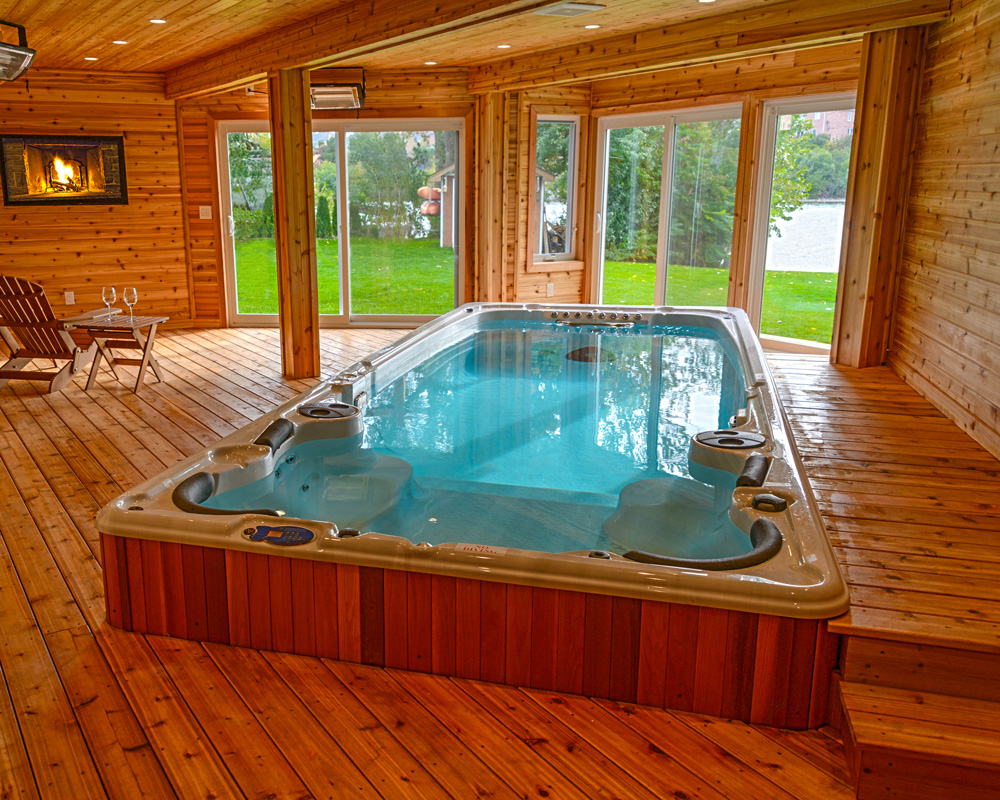
Modern house building is often characterized by a small backyard, with not enough space for a full-sized pool. A swim spa can be a solution in this situation, as it is much smaller than traditional pools, and you can install it either outside or inside the house. This freedom in placement allows you to choose for example how private your relaxation area will be, and backyard swim spa landscape ideas are limitless.
Although a swim spa is much smaller than regular pools, you can’t place it anywhere. Among the most popular locations are the backyard and a separate room on the first floor or in the basement. In addition, swim spas are often installed on or inside a platform, which is not only beautiful but also allows you to hide plumbing and electrical connections from view.
Semi-inground and in-ground swim spas are usually modular models. This design allows for customization, but it is important to consider that it may require complete reinstallation in the case of repairs. Self-contained models are usually installed as above-ground swim spas. Always consider your appearance wishes with this type of placement, as above-ground swim spas can look more massive.
Indoor swim spas are less common than backyard swim spas, but it’s still a great option for those who seek privacy and don’t want to depend on the weather outside. It’s a perfect addition to a home gym for a full workout and relaxation afterward.
How To Maintain a Swim Spa?
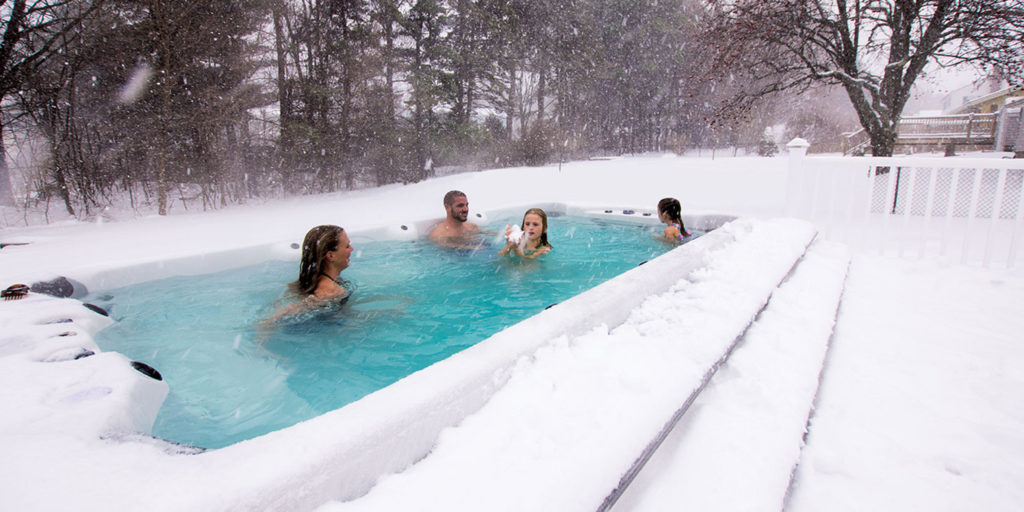
A swim spa is a complex mechanism with many moving parts, heating elements, and water jets. To keep it clean and trouble-free for years, it is important to follow the manufacturer’s instructions. But there are some general guidelines that will work for all types of swim spas. If you are already familiar with hot tub maintenance, these points will not be new to you. Swim spas are very similar in design to hot tubs, so there is almost no difference in care.
- Regular cleaning. It is recommended to clean the surface and walls once a week to prevent dirt and debris buildup. In addition, it is necessary to change the water every 3-6 months (depending on the manufacturer’s recommendations)[1].
- Water balance. You should monitor and balance the water chemistry every 3-4 days. The most important parameters are pH, alkalinity, and sanitizer (chlorine or bromine). For testing, you can use test strips and kits.
- Temperature control. Manufacturers recommend keeping your swim spa at the preferred temperature at all times, as this reduces stress on the heating elements and prolongs their lifetime. The cover plays an important role in preserving the temperature and protecting the swim spa from external contaminants, so do not forget to put it on after use.
- Filtration system. It is important to check the filters every week and clean them as needed. Clean filters will keep your swim spa water fresh and safe for you to use [1].
- Professional inspection. It is recommended to get your swim spa inspected every 1-2 months to prevent breaks and wear and tear on parts.
Are Swim Spas Worth It?
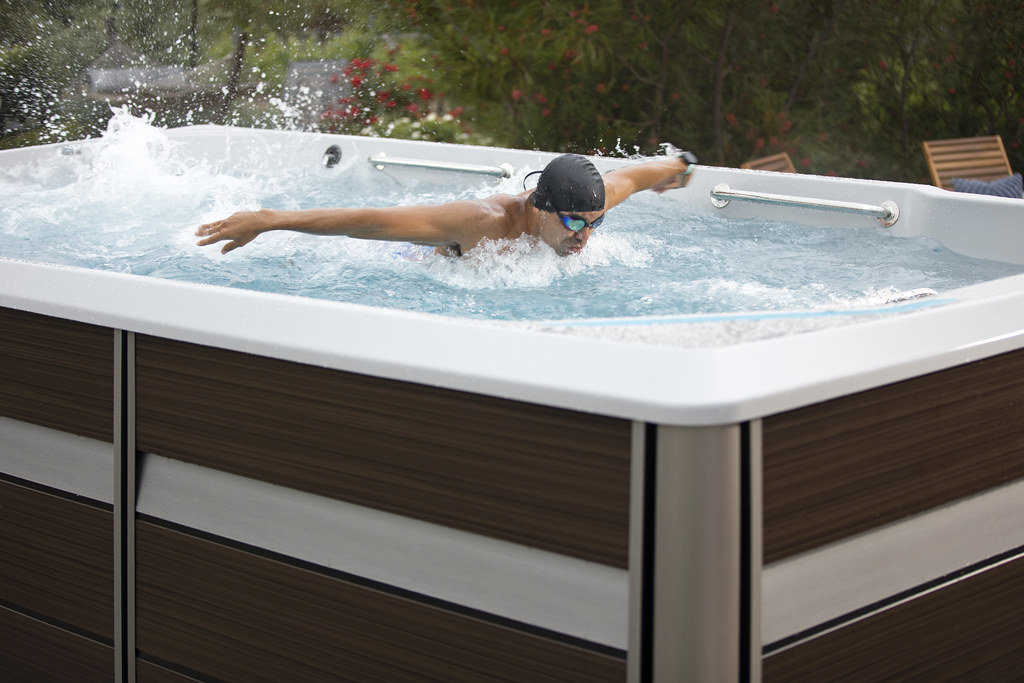
Swim spas provide unique features that neither hot tubs nor classic pools can offer. They have a huge number of advantages but still have disadvantages. Let’s take a look at swim spas from all angles so that you can conclude whether they are worth it.
Benefits
- Full-body workout
Swimming against the constant current gives an even, continuous load to all muscles and has a positive effect on the cardiovascular system[2]. Swimming in place is different from regular pool swimming because you don’t have to pause and turn around. This way you can fully immerse in the process and perfect your technique. You can control the strength of the current to increase or decrease the effort.
All this makes the infinity pool swim spa an indispensable training tool for swimmers. In addition, the constant current can be used for aqua aerobics, stretching, water walking, and aqua jogging.
- Hydrotherapy and massage
According to research, immersion in hot water after exercise reduces fatigue and helps you relax. Surprisingly, it helps you get into a workout routine more easily and exercise more regularly[3]. Massage is a very important part of post-exercise recovery. Jets in the hot tub swim spa part help to reduce the onset of muscle soreness. Massage is most effective if done no longer than 10-15 minutes after a workout[4]. So, the design of the swim spa offers you complete relaxation and recovery after sports activities.
- Compact size
Swim spas are much smaller than pools but offer you the ability to have a full swim workout right in your home. This is a huge advantage for those who have a small backyard or want to exercise indoors.
- Year-round use
Swimming spas have temperature control, which allows you to train even in winter. This is also an important difference from classic pools, as they can only be used during the warm seasons.
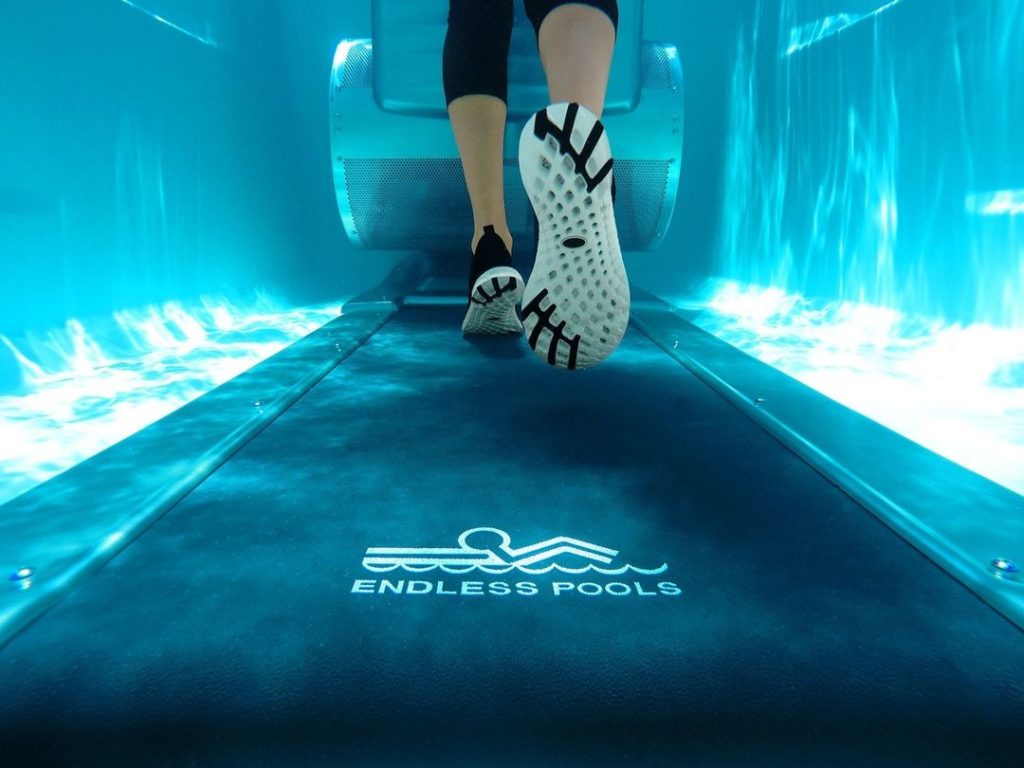
Drawbacks
- Shipping and installation
Swim spas are heavy even without water (average 2500 pounds), which makes them difficult and expensive to deliver and install. Modular and in-ground swim spas are the most difficult to install. On the other hand, self-contained models require much less preparation and can even move into a new home with you without any problems.
- Maintenance and repair
Maintaining swim spas requires effort, time, and chemical costs. In addition, complex mechanisms can wear out, which also leads to additional expenses. Manufacturers are constantly working to eliminate this disadvantage. For example, now there are self-cleaning models in which you can change the water only once a half year.
- Electricity and water bill
Swim spas maintain water temperature using electricity, which of course will affect your bills as well as the water fill. Most users nevertheless note that the bills have not increased too much.
- May not be suitable for professional swimmers
Swimming competitions take place in swimming pools, and an important part of technique training is the turns by the wall. Also, getting used to the size of the pool plays a big role in sports swimming. For this reason, the swim spa is not suitable for competition training. Although some swimmers use swimming against the current as additional strength training.
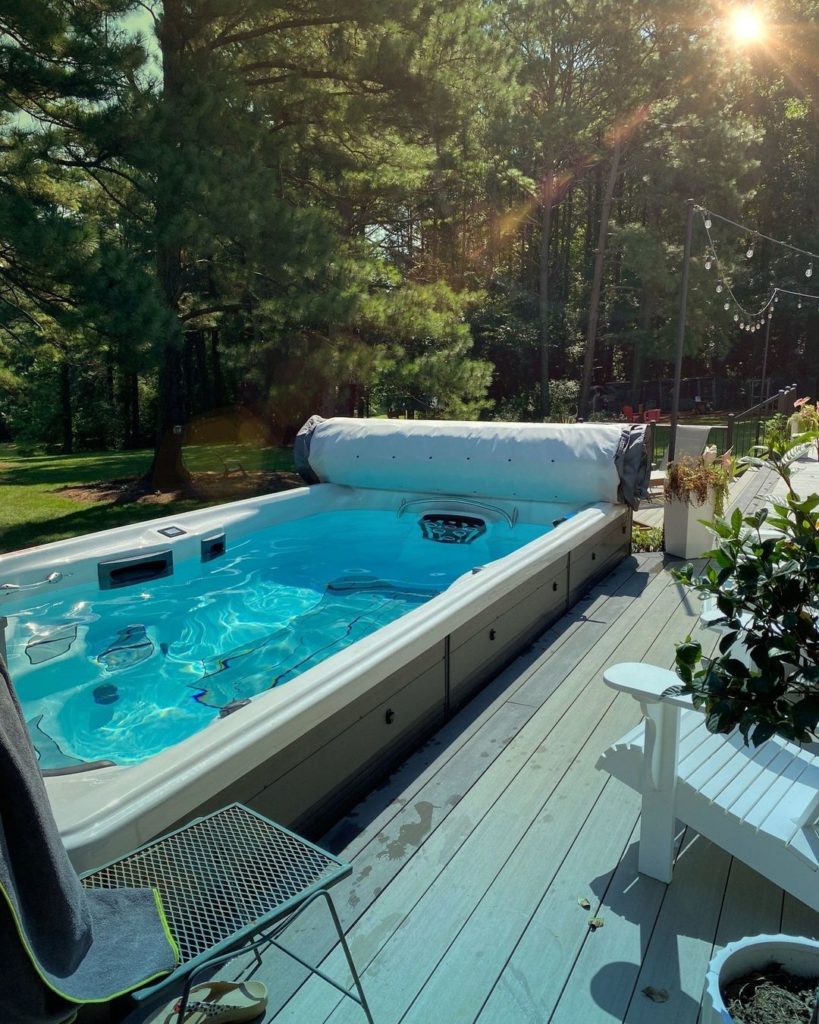
Summary
In conclusion, swim spas are a truly unique and compact alternative to the exercise pool. Moreover, the hot tub function plays a very important role in recovering after sports activities. Swim spas are often standing in line with hot tubs and swimming pools, but there are still differences between them. So that you can make a choice that perfectly suits your lifestyle, we have reviewed what a swim spa is and made a table comparing it to hot tubs and swimming pools.
Our team has used recent scientific research to confirm the benefits of swim spas, find out their drawbacks, and give you a complete picture of what it is.
We hope our article helped you find answers to all the questions you may have had about swim spas!
FAQ
🏊 Will I be able to swim in a swim spa properly?
Yes, swim spas are designed for swimming in place. The constant current system creates a strong water flow that can be regulated according to your strength and swimming style. With this feature, you can adjust the flow strength to suit your skill level.
🌊 How is a swim spa similar to a hot tub?
Swim spas and hot tubs share a similar design, heating system, and built-in water jets. The main difference is that swim spas have a constant current system designed for workouts such as swimming, aqua jogging and others. Almost all models include a hot tub area where you can relax after your training. You can find a table with a detailed comparison in our article.
🛁 What size is a swim spa?
Swim spas can come in a variety of sizes, but they are smaller than traditional pools. Typically, a swim spa ranges from 11 to 20 feet in length and from 6 to 8 feet in width.
🤔 What is a swim spa hot tub?
This is one of the functions of a swim spa, designed to relax and soak after a workout. Most models have seats and massage jets on the wall opposite the constant flow system. This area is commonly called the swim spa hot tub.
❓ What is a Hydropool swim spa?
Hydropool is a well-known brand of swim spas. Their swim spas are known for their self-cleaning technology, which keeps the water clean with minimal effort. They are also often equipped with adjustable flow systems, making them suitable for different skill levels.
🔎 What is a swim spa pool?
This is the swim spa area where instead of seats, jets of constant current are installed. They create a flow of water that allows you to swim while staying in place. This area is designed for practicing and learning to swim.
References
- Rinke, C. M. (1983). Hot tub Hygiene. JAMA, 250(15), 2031. https://doi.org/10.1001/jama.1983.03340150073032
- Lee, B., & Oh, D. (2015). Effect of regular swimming exercise on the physical composition, strength, and blood lipid of middle-aged women. Journal of Exercise Rehabilitation, 11(5), 266–271. https://doi.org/10.12965/jer.150242
- Méline, T., Solsona, R., Antonietti, J., Borrani, F., Candau, R., & Sanchez, A. M. J. (2021). Influence of post-exercise hot-water therapy on adaptations to training over 4 weeks in elite short-track speed skaters. Journal of Exercise Science & Fitness, 19(2), 134–142. https://doi.org/10.1016/j.jesf.2021.01.001
- Ernst, E. (1998). Does post-exercise massage treatment reduce delayed onset muscle soreness? A systematic review. British Journal of Sports Medicine, 32(3), 212–214. https://doi.org/10.1136/bjsm.32.3.212
